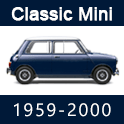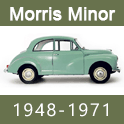| Orig. Posting Date | User Name | Edit Date |
| Feb 4, 2012 05:05AM | scooperman | |
| Feb 3, 2012 09:12PM | Isleblue65 | |
| Feb 3, 2012 08:38AM | Spank | |
| Feb 3, 2012 07:07AM | CooperTune | |
| Feb 3, 2012 03:53AM | scooperman | |
| Feb 2, 2012 05:18PM | Spank | |
| Feb 2, 2012 01:36PM | DRMINI | Edited: Feb 2, 2012 01:38PM |
| Feb 2, 2012 11:39AM | mur | |
| Jan 30, 2012 10:19PM | Spank | |
| Jan 30, 2012 03:48AM | nkerr | |
| Jan 30, 2012 03:27AM | scooperman | Edited: Jan 30, 2012 03:29AM |
| Jan 29, 2012 08:54PM | pooper | |
| Jan 29, 2012 04:42PM | mini-dude | Edited: Jan 29, 2012 04:43PM |
| Jan 29, 2012 04:17PM | Spank |
|
Total posts: 1581
Last post: Jun 14, 2025 Member since:Mar 10, 1999
|
Cars in Garage: 0
Photos: 0 WorkBench Posts: 0 |

|
I have mentioned Hamill's 1275 A-series book before, it's a decent source for build guidance. Lots of facts and pictures, not as confusing as Vizard. Google books search lets you see almost all of Chapter 9 which deals with valve springs.
Hamill info on 1275 valve springs
|
Total posts: 3113
Last post: Mar 5, 2021 Member since:Feb 9, 2002
|
Cars in Garage: 0
Photos: 1 WorkBench Posts: 0 |

|
When I purchased dual valve springs from Minimania about 8 years ago (part number AEG592) they measured at 90 pounds at 1/2" compression from free state. The latest dual valve springs purchased from Minimania in June (part number VSP3964) measured in the high 60 pound range at 1/2" compression from free state.
My valve stems were starting to gall and mushroom and rockers dimpled after 8 years and only about 5000 miles with the AEG592 springs. I assumed this was due to too high spring force once I compared the old springs with the new. The new springs are described just as the AEG592 springs were: replacement Cooper S dual springs.
If I don't get valve bounce with these lower force springs I'm going to run them, and time will tell if the higher force springs were responsible for killing my rockers and valves in short order. I'm still not sure why Cooper S springs are all over the map as far as spring force.
"I drive a Mini. What are you compensating for?"
|
Total posts: 6349
Last post: Oct 22, 2023 Member since:Mar 9, 1999
|
Cars in Garage: 0
Photos: 0 WorkBench Posts: 0 |

|
Minispares (and Mania?) has used the same part number but supplies different parts for them. They used to have 4 different springs but they've boiled it all down to 2 "catch all" springs. Perhaps the difference when comparing yours, DRMINI and the ones I have owes to the change in production. Not sure who has what at this point.
The latest springs don't use the inner locating collar, CooperTune.
|
Total posts: 4141
Last post: Jul 28, 2024 Member since:Oct 8, 2011
|
Cars in Garage: 0
Photos: 0 WorkBench Posts: 0 |

|
To be honest I have not read all posts to this thread. Looking at the pictures I can't see if you are using the retainer and lower inner spring locating shim. I think that will change the pressures seen from the inner spring. I have always had access to a spring tester. I feel the lowest spring pressure for the RPM range used is best. For street cars I often use Isky outers only.
Steve
|
Total posts: 1581
Last post: Jun 14, 2025 Member since:Mar 10, 1999
|
Cars in Garage: 0
Photos: 0 WorkBench Posts: 0 |

|
As Dr. Mini says, there is something wrong here, which is what I tried to say earlier. The C-AEA526 should read about 70-75lb at installed height, then read about 180lb after another half inch of squeeze. Spank measured 128 and was well beyond any max lift spec point, he was in coil bind. So the process/procedure is wrong, or the tester is wrong, or "you received the wrong springs".
While mentioning process, I should point out that one should not squeeze springs to the fully bound condition. The spring manufacturer defines coil bind before this occurs, they specify some minimum testing distance between the center coils, usually something like .010" or .020" between coils. If they don't give a spec, look up the spec for a similar spring. By this point, the end coils are rubbing, its not a useful spring beyond this point. Pushing the spring to full bind can deform it, the coils try to move past each other and this makes the spring angry, sometimes it leaps out of the tester to show its displeasure, thus the comment about goggles.
|
Total posts: 6349
Last post: Oct 22, 2023 Member since:Mar 9, 1999
|
Cars in Garage: 0
Photos: 0 WorkBench Posts: 0 |

|
I got a bunch of 12G295 heads for $20-$40 each, so I just started using those on the turbo 998, therefor no more big bore heads on small bore blocks with boosted motors. Biggest reason is they (Big Bore heads) on fine on 998s without boost and without water passage mods, but for boosted motors the head gaskets just aren't doing so well. I could plug and redrill water passages, but I need lower compression now anyways so we can run more boost. I did an unscientific comparison between 12G295 and 12G940/12G1316 heads and the port sizes, throat sizes and chamber shapes are identical-- only difference is valve sizes, and that's easily corrected.
But back on topic: This head is a big bore head for a big bore motor. And for the same install height, the stock single springs have a heavier seat pressure and only a marginally lower over the nose pressure than the new dual valve springs that are sold as upgrades.
|
Total posts: 8645
Last post: Dec 16, 2020 Member since:Oct 27, 2000
|
Cars in Garage: 0
Photos: 0 WorkBench Posts: 0 |

|
Hi Mur,
Corolla rockers are getting thin on the ground over here, where I used to buy a S/H set at the wreckers for A$20 the last set (3? years ago) cost me $50.
By the time I buy bronze bar for the bushes, clean up then braze plugs into the rocker post holes, and pay myself something for all the subsequent machining- I can now import a new set of Minispares 1.3 or 1.5 roller tip ones cheaper.
So, it just isn't economically viable any more.![]()
[edit] It's the same story with the .044" offset bushed pressed steel rockers I used to do (which makes `em 1.31:1).
Kevin G
1360 power- Morris 1300 auto block, S crank & rods, Russell Engineering RE282 sprint cam, over 125HP at crank, 86.6HP at the wheels @7000+.
|
Total posts: 5840
Last post: Nov 1, 2019 Member since:Nov 12, 1999
|
Cars in Garage: 0
Photos: 0 WorkBench Posts: 0 |

|
Isn't there a bit more complexity here when you are using a big bore head on a small bore block? I would imagine that corrupted rocker ratios and lengthy adjusters would both contribute to skewing the point where the valves float one way or another.
Lets be fair, a 1300 with a lumpy cam and S rockers is going to have pretty lousy lift, but with good clearance and S/midget/1300GT springs it will rev to 7000 without bounce and it will seem like you are going fast, whereas the guys who do their homework like Kevin in Australia will get more lift, faster and a little longer and the resulting area under the curve is going to mean more torque.
I think the valve spring test tool is an excellent addition to your world, as you can get the springs to be the same across the board. Then, getting the rocker ratio as good as possible, perhaps with a pair of steel posts from an old set of minispares 1.5s and offset bushes, and finally custom length pushrods would allow you to have an valve train that isn't particularly stressed in its operational envelope and is maximizing efficiency.
Maybe Kevin/Dr. mini has enough corolla rockers about to do a set for LeMons, which he should come over and do.
|
Total posts: 6349
Last post: Oct 22, 2023 Member since:Mar 9, 1999
|
Cars in Garage: 0
Photos: 0 WorkBench Posts: 0 |

|
Thanks to those who took the time to add to this. Some of it is over my head, admittedly. I have a degree in Literature and Writing and no engineering background. I'm just trying to understand if the stock British Leyland/Rover single springs I have will do the same or a better job than the aftermarket double springs I have.
The data states that the stock single springs, at the tested install height, have a higher seat pressure than the aftermarket springs (regardless of the accuracy of the shop-quality Rimac spring tester-- and it is an arbor press style tester). The stock single springs are, from what I can find, also supposed to have a 70lb install pressure.
The more I read, the more evidence I find that the inner spring in a dual spring setup is designed more to alter the harmonics of the single spring rather than simply increase spring pressure.
See, and I thought it was the other way around-- the inner springs were primarily to add pressure and a byproduct was that they produced canceling or neutralizing harmonics. That explains why the information I was deriving was that the single springs were nearly equal to dual springs because of their superior seat pressure.
So, perhaps, the dual springs will allow for a softer seat pressure but still prevent valve bounce whereas the only mechanism to prevent valve bounce in a single spring is increased seat pressure.
Hmm.
And I now realize that I have also been pre-supposing that seat pressure was more important than over the nose pressure. But now that I think of it and stew a bit on what I've read here and elsewhere, the OTT pressure resists the throw (or loft?) which I can see/imagine is a significant contributor to valve float.
(and if it matters, the cam is nothing more exotic than a stock mg metro cam, the one for which the stock single springs were paired-- I just want to be able to hit 6500rpm regularly without risk of valve float.
|
Total posts: 654
Last post: Dec 20, 2017 Member since:Sep 24, 2011
|
Cars in Garage: 0
Photos: 0 WorkBench Posts: 0 |

|
Norm
|
Total posts: 1581
Last post: Jun 14, 2025 Member since:Mar 10, 1999
|
Cars in Garage: 0
Photos: 0 WorkBench Posts: 0 |

|
At this point I would say you have data, not information. The C-AEA526 set is nominally 180lb rated at 0.5" lift, approximately 70 to 75lb at 1.4" fitted height. Your spring checker says otherwise...I think you might want to have that spring checker checked.
Many spring checkers are made for use with an arbor press, but the instructions say its OK to use them in a vise. This does not always mean that you can grip the tester in a vise, like a drill press vise, and then use the drill press like an arbor press, it usually means to use a big bench vise as a horizontal press. With some testers, if the body of the tester is squeezed (e.g. by a vise) the tester will read inaccurately.
Can't tell from your pictures, your tester may have its own arbor. But get your tester tested, if its in cal then you received the wrong springs.
p.s. I hope you wear goggles when you load up your spring checker with two sets of springs.
|
Total posts: 164
Last post: Feb 26, 2018 Member since:Jan 10, 2006
|
Cars in Garage: 0
Photos: 0 WorkBench Posts: 0 |

|
The spring rate or force deflection is affected by the number of coils, number of dead coils, the diameter of the wire, and the material and strength of the wire used. Generally the "dead" coils will have a slightly large number (mass) for the end that fits against the head and slightly smaller for the free end. You should be using chrome vanadium material or chrome silicone and be sure that they are "valve spring quality". The quality is related to the suface finish of the steel wire. "Valve Spring Quality" springs need to be "shot-peened" to remove any imperfections in the surface. There is an ASTM specification that spells this material and quality requirements for the AISI 6150 material.
Peening: Heat treated springs shall be thoroughly and evenly shot peened (without excessive cracked or broken shot being used) over the entire surface with special attention given to the inside of the coil of compression springs. After peening, the springs must not be subjected to temperatures over 450 ° F in order to prevent lowering the benefits obtained by shot peening.
Inspection: Magnetic Particle Inspection, with demagnetizing after inspection.
If you have access to magnetic particle exmaination equipment you should check them for surface imperfections.
Spring rates should be taken at two heights and should not vary by more than 10% from spring to spring.
Make sure all ends are close wound and free of all sharp edges and tool marks. The slightest flaw in a valve spring can grow and result in premature cyclic fatigue.
Generally the springs are designed to accomodate the amount of lift, duration, and rate of lift as set by the profile (contour) of the cam lobe. If you are using a camshaft (lobes) that are different than the stock cam profile, this would have an affect on the spring design.
Norman & Jesse Nelson
Pooper & Pynt Syz
Shasta Minis
|
Total posts:
Last post: Oct 21, 2020 Member since:Apr 22, 1999
|
Cars in Garage: 0
Photos: 0 WorkBench Posts: 0 |

|
increased spring load can be directionally correct for valve bounce but you can also have too much spring. Short of being able to test this, I would suggest to go with manufacture specifications if they are available for whatever spring you are using(matched to cam, etc.). Dual springs are designed to rub against each other for dampening. Try to set the install height 0.070in. from coil bind. Measure peak valve lift on the engine, not by multiplying some rocker ratio(they are usually wrong). You should expect 0.030 to 0.040" valve loft from idle to limiting speed. Also, the best and easiest way to increase limiting speed is by reducing mass on the valve side: lighter retainer, lighter spring, lighter keeper, lighter valve. On the cam side, mass is not a biggy, a big fat(heavy) pushrod is usually worth it in the stiffness you gain. If the valvetrain is being run at limiting speed, the spring tips will suffer. If they don't break, they will turn blue. Have fun!
|
Total posts: 6349
Last post: Oct 22, 2023 Member since:Mar 9, 1999
|
Cars in Garage: 0
Photos: 0 WorkBench Posts: 0 |

|
I have been paying more attention to spring pressures when I put together heads for LeMons and have bought a Rimac spring tester.
Today, while reassembling a head I'm trying to decide which springs to use to help prevent valve bounce at high rpm. My general belief has been that a double spring will be a stiffer spring and more likely to prevent valve bounce.
I started comparing the stock, 12G940 single springs to the new C-aea526.
For the same installed height (and using the caps while testing!) I found:
The stock single spring seat pressure (valve closed) was about 68 lbs

The new dual springs were only 58 lbs at the exact same spring install height

Compressed spring tension (over the top / nose pressure) for stock single spring was 123-4 lbs

And the over the top spring pressure for the dual springs was 128

The maximum crush was about 1" for both--- no appreciable difference in height at spring bind from what I could tell.

So what this is telling me is that the stock single A+ springs are about the same as new c-aea526 dual springs-- actually, I think they are better because they have a higher seat pressure when closed, no?
Now it stands to reason that the dual springs have a higher rate of increase as compared to the dual springs (start 10 lbs lower and end 4-5 lbs higher)-- but for preventing valve bounce yet preserving cam life doesn't one want a higher seat pressure and lower nose pressure? But the new springs can't be shimmed any more than the stock single spring as they both have coil bind at the same height.
There's got to be another factor at play that makes the dual springs better for preventing valve bounce-- These latest dual springs actually chafe against one another so I'm assuming this helps mitigate the valve bounce?
Any input?





